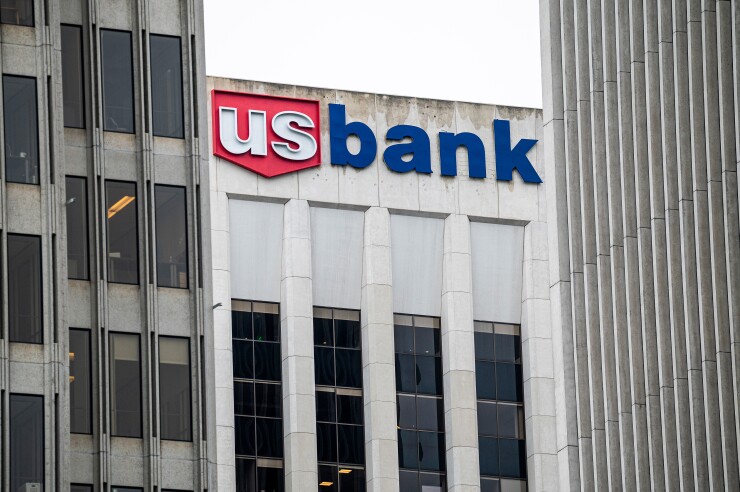Want unlimited access to top ideas and insights?

The $684 billion-asset company reported net interest income totaling $4 billion for the quarter ending March 31, and it expects a similar outcome in the second quarter. It predicts full-year spread income will total between $16.1 billion and $16.4 billion, suggesting a stronger second half to 2024, as the bank had
Still, the higher-for-longer scenario took some of the luster off the bank's outlook. Its initial projection for 2024 called for $16.6 billion of net interest income.
While the pace of commercial deposit migration into interest-bearing accounts has diminished,
"The pace of this action is slowing. We absolutely see that," Stern said. "It's just not slowing as fast as we would have anticipated. So to boil that all together, what we do see now with our guidance is that second-quarter net interest income will be relatively stable, and we should see growth in the second half of the year."
Corporate clients are stretching for yield to "optimize" their balance sheets, according to Stern. "Now that they know [this higher rate environment] is going to be here for a longer period, they're taking a closer eye to it," Stern said. "We're just seeing that more and more."
Noninterest deposits totaled $85 billion at March 31, or 17% of
At least one analyst, HSBC's Saul Martinez, termed
The Minneapolis-based company, nevertheless, insists that brighter times lie ahead. That's due in part to asset churn, including $3 billion of securities that are set to roll off the books and be replaced at higher yields, according to Stern.
"The broader higher for longer rate environment will continue to challenge net interest income, with some institutions facing declines due to higher funding costs or changes in deposit mix and pricing," Paiz-Fredel wrote.
Wrapping up the first quarter,
"Any time we can differentiate ourselves with these sorts of fee categories, that's helpful," Stern said in an interview following the conference call. "They're not limited to our branch area. We can service clients all over the country. … Broadly speaking, this is the offset in this type of environment."
Payments continued to be a strong suit, generating income totaling $977 million in the quarter, up 4% year over year and 14% from the first quarter of 2022.
"We have made a lot of investment, put a lot of dollars in all the different payment capabilities," Stern said in the interview. "The payments mechanism and rails, the product capabilities we've built are unique. Not many banks have the suite of products we have."
Small business banking is emerging as another differentiator. Through the first seven months of the federal government's 2024 fiscal year,
Credit quality was in line with expectations during the first quarter, according to






